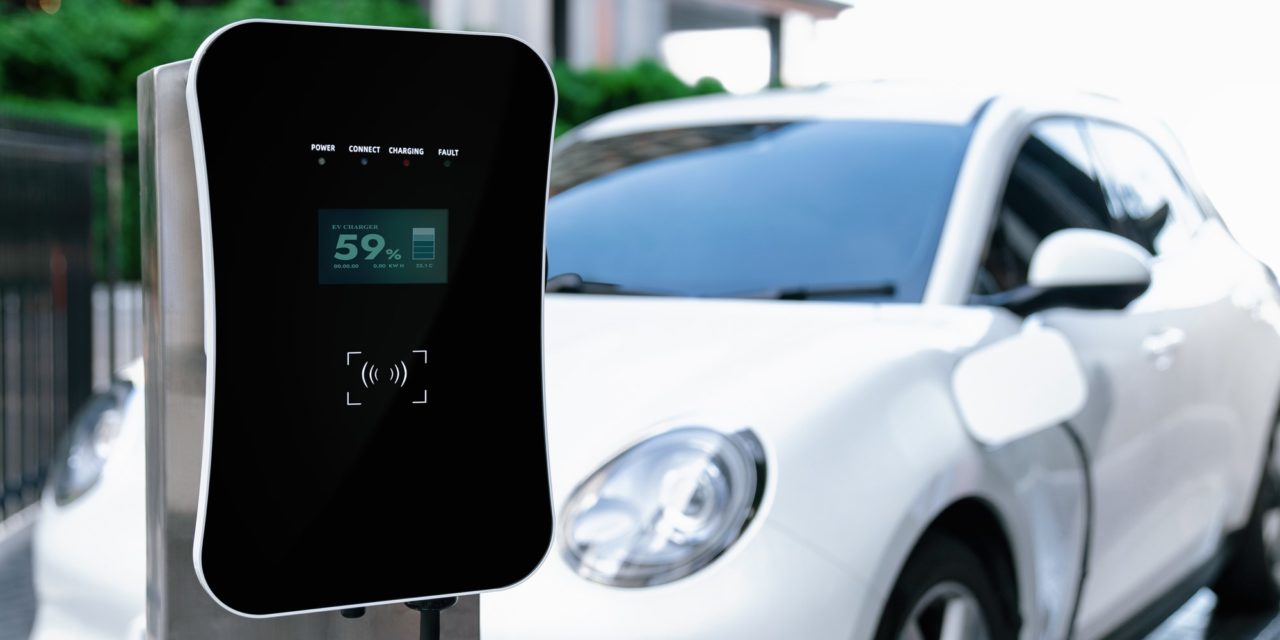By Brian Libby
The days of gasoline-powered automobiles may not quite be over, but electric vehicles (EVs) are here to stay. EVs are quickly gaining market share, and the infrastructure to support public and home EV charging needs to keep pace. To help this along, we’ve developed a primer on home EV charging stations, from model options and installation to pricing and solar storage.
In 2022, EV sales grew by a hefty 65 percent, even as overall automobile sales fell for the first time since 2011, according to Cox Automotive, parent company of the Kelley Blue Book. Cox is forecasting EV sales to surpass 1 million in 2023.
While the consumer pull depends partly on home EV charging, for electrically powered automobiles to truly dominate, there must also be a complete national network of public charging stations; sufficient to overcome range anxiety: the fear of becoming stranded with a dead battery. That’s why last year the Infrastructure Investment and Jobs Act, passed by Congress and signed into law by President Biden, invests $7.5 billion in EV charging and over $7 billion in EV battery components, critical minerals, and materials.
Not all home EV charging setups are straightforward. Using solar panels to charge your EV makes your transportation greener than green. And there is the potential for EV owners to use the car’s (or truck’s) large-capacity battery to power your house during electrical-grid blackouts, or even at peak rate times for electricity.
Types of EV Chargers
There are three basic types of chargers: Level 1, Level 2, and DC fast (sometimes known as Level 3); DC fast comes in a few different types.
- Level 1 chargers plug into a standard 120 V wall outlet, and usually come with the vehicle at purchase. They’re the slowest, requiring 10 or more hours to fully charge the car.
- Level 2 (L-2, for short) charging is the most common EV charging type. It’s increasingly the standard for both homes and workplaces, and it is compatible with all electric vehicles sold in the US. Level 2s cut charging time down to several hours. The Tesla Wall Connector (also known as the Tesla home charger) is the Tesla-specific L-2 home EV charger.
- DC fast chargers (DCFC) offer a faster charge than L-2 charging, but are not compatible with all electric vehicles.
“They’re completely different animals,” explained Jon Myers, who heads public relations for Miami, Florida-based Blink Charging. “No one is going to put a DC fast charger in the home. With the electrical system you have in your house, it just isn’t feasible, and at about $100,000, it’s not cost-effective.”
*Assumes 1.9 kW charging power †Assumes 6.6 kW charging power ‡Charging power varies by vehicle and battery state of charge.
Source: US Department of Energy Alternative Fuels Data Center.
Level 2 is fine for home EV charging
All electric vehicles, except Teslas, use public and private L-2 chargers via a J1772 connector, also known as the J-plug. (Tesla vehicles come with the adapter that lets you use the J-plug.) An L-2 charger will typically take about 4-10 hours to fully charge an EV. For home EV charging, that usually works.
“Eighty percent of EV charging is done at home anyway, and they charge overnight,” Myers added. “The average mileage that an EV driver drives is around 30 miles a day. People really don’t need to go in and do a super-quick fill up at home.… You don’t run your cell phone until it’s completely empty and then run to go charge again. You use it during the day, and at night you plug it in and then it charges. That’s really how EVs are run. So we kind of have to get into that mentality [with our cars].”
Public DC fast chargers
Even so, sometimes we need a quick charge to get us home. “Where these [DC] fast chargers come in is along major highways, because that’s where you do need it if you’re traveling from here to here: to provide that 15-minute, half-hour stop,” Myers said. “You get some coffee or whatever, fill up and then be on your way.”
FYI: there are three types of DC fast chargers: CHAdeMO, CCS, and Tesla. Again, you’ll find these DCFC stations in public, but not for home EV charging.
- CHAdeMO (the initialism for charge de move is pronounced CHAD-em-oh) has become the standard for manufacturers like Nissan and Mitsubishi.
- The more common CCS, or combined charging system, is an open-source standard. In the US, all newly manufactured passenger EVs (except Tesla) will use the CCS connector.
- Tesla vehicles utilize their own DC fast chargers, but vehicles come with adaptors for CCS.
Installation and Cost
To get started with home EV charging, you’ll need to purchase an L-2 charger: average price tags range from $400 to $1,000. Depending on options and accessories, you can pay much more. You’ll also need help from a qualified electrician. While YouTube includes numerous do-it-yourself installation videos, a safe home EV charging setup requires professional knowledge of both your home’s electrical system and the specific charger being introduced. Otherwise, your safety, your home, and your charger’s performance might be impacted.
How much will this cost? The installation of an L-2 charger at home will vary depending on your local average rates for an electrician and the extent of work needed. If you already have a 240 V receptacle in the right spot, a plug-and-play installation might be inexpensive—typically $200 to $500. If you need to rewire and upgrade your electrical service and panel, expect $1000 or more on your estimate. Note that with thoughtful energy management, you may not need to upgrade the electrical panel itself.

Hiring a qualified and experienced installer comes with inherent benefits. By certifying your installation with an licensed electrician, you may qualify for local grants and incentives, which may require proof of certification. The Inflation Reduction Act, passed in January 2023, will give taxpayers up to $1,000 in tax credit. Be sure to check the warranty with the charger manufacturer. Are there benefits to using their affiliated installers?
Manufacturers of L-2 home EV charging stations include Tesla, which builds chargers not only for its own cars but for the J1772 Level 2 type. Most chargers come with a charging cord, which is usually about 20 feet; make sure yours is long enough to reach your EV. Chargers usually also come with a mobile app to control the device.
Energy managements systems and solar storage
With millions of Americans beginning to drive EVs, there are legitimate concerns about electrical grid capacity, especially during the summertime cooling season in regions where the grid is stressed. Yet in the long term, EV batteries may become part of the solution, through emerging V2H (vehicle-to-home) and V2G (vehicle-to-grid) technology and bi-directional charging.
Americans average about 35 miles of driving per day, but EV drivers even less; even so, those 35 miles would only take 1 to 2 hours of charging with an L-2 charger. Given that 80 percent of charging is done at home, for the rest of a 24 hour cycle as EVs tend to stay plugged in, that surplus power could serve other purposes. As L-2 charging becomes ubiquitous in homes, a 10 hour charge could provide a surplus of miles. V2H charging allows your home to draw some power from your EV’s battery when solar power is unavailable (nighttime) or during peak energy rates, usually late in the day. V2G charging does one better, sending electricity not just to your home but the grid itself. Your car battery combined with a solar batteries and a smart energy management system, could make your household far less dependent on the grid.
Imagine some future electrical-grid blackout, but your home doesn’t go dark. When the grid goes down, your EV battery can keep your refrigerator, Wi-Fi, and lights on. In fact, a constellation of EV batteries could help restore electrical service to your neighborhood sooner, and may even prevent your local utility from having to build an extra fossil fuel power plant to meet growing demand.
Our team researches products, companies, studies, and techniques to bring the best of green building to you. Elemental Green does not independently verify the accuracy of all claims regarding featured products, manufacturers, or linked articles. Additionally, product and brand mentions on Elemental Green do not imply endorsement or sponsorship unless specified otherwise.
The author:
Brian Libby is a Portland, Oregon-based design and arts journalist. He has written for The New York Times, The Wall Street Journal, Architectural Digest, Dwell, and Metropolis, among many others. You can find him at brianlibby.com.







![10 Steps Toward a Zero Energy Home [Infographic]](https://elemental.green/wp-content/uploads/2016/04/cbfb-440x264.jpg)

